|
   |
|
Page 3 |
Newsletter 139 Winter 2022 © Hampshire Mills Group |
|
Anchor Mills, Paisley
Ruth Andrews
Photos by Ruth and Keith Andrews
|
|
Paisley-pattern shawls and Coats embroidery threads
with their iconic anchor trademark are world famous
products which originated in the town of Paisley
south west of Glasgow. Of course there must have
been mills involved in their production and several
of them have survived and have been refurbished and
reused, variously as offices or for residential use.
They have been extensively written about on the
internet, but Keith and I were not aware of this
when we stopped at Morrisons supermarket in Paisley
on our way home from Scotland.
We had specifically gone to Paisley to photograph
Gilmour Street railway station, as you see here.
|
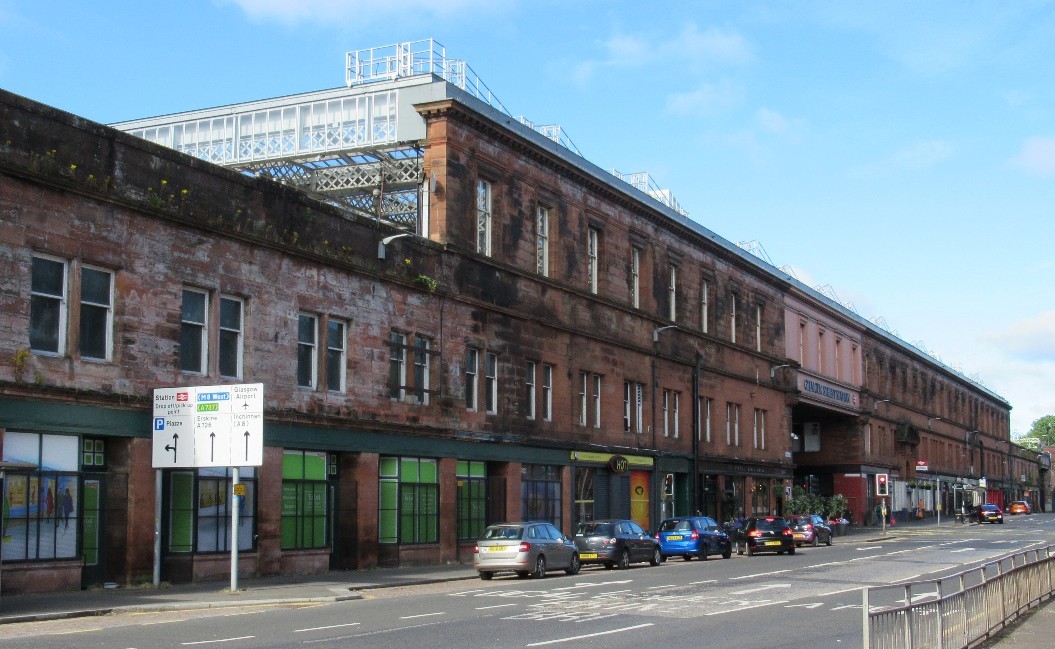 |
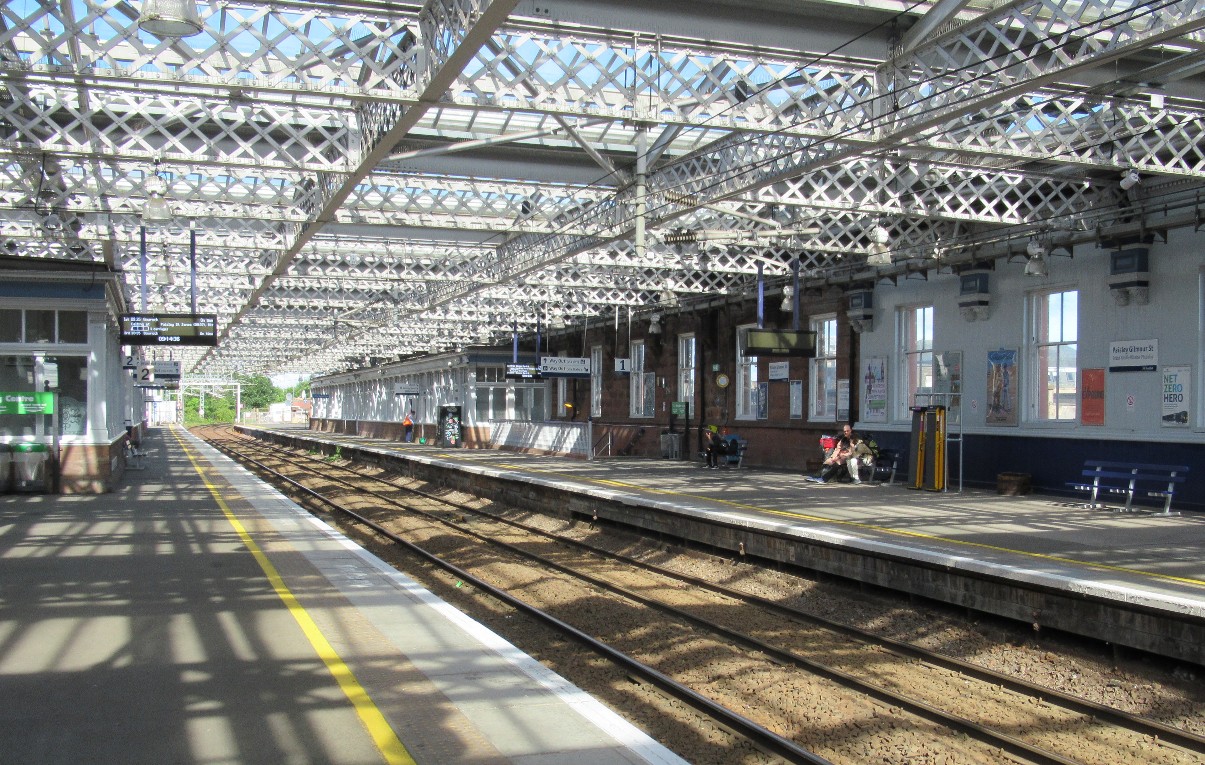 |
|
In 1819 J&J Clark & Co developed a smooth cotton
yarn for use as a cheaper substitute for silk. By
1880 they were in fierce competition with J&P
Coates, and the two companies amalgamated in 1896.
A group of mills at Ferguslie – now demolished –
spun and twisted the cotton to make thread, but it
was mercerised, bleached, and dyed at Anchor
Mills beside the River Cart in Paisley. Many of
these wet processes caused the river to be
notoriously polluted. By the 1980s the industry had
declined, thread production in Paisley had ceased,
the buildings had become unused, and several had
been demolished. This included in 1972‑3 the
enormous 1872 Atlantic and 1875 Pacific Mills with
over 15000 spindles, which stood where Morrisons and
its car park are now situated; they were the
largest manufacturing unit on the site.
|
|
Arguably the most attention-grabbing mill remaining
is the Domestic Finishing Mill which is
perched next to Hammills Falls, a ledge of volcanic
rock across the River Cart. It dates from 1886 and
designed by Woodhouse & Morley of Bradford as a
spooling mill. The grade A-listed building was
restored in 2003 by The Princes’ Regeneration Trust
(now The Princes’ Foundation), costing in the order
of £11 million. |
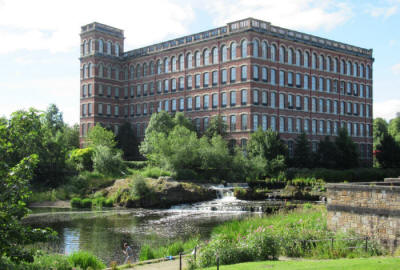 |
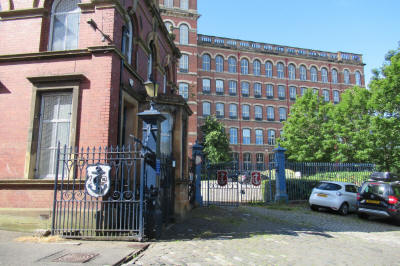 |
The grade B West Seedhill Gatehouse of 1909,
which formed a gateway to the Anchor Mills site was
also restored. It had a hydraulically operated
opening mechanism driven by water pumped into a tank
in the roof. As you can see, it features the famous
anchor trademark. |
|
The huge stone-built L-shaped Embroidery Mill
(below)
is older, dating from the 1840s. It is where the
world-famous Paisley-pattern shawls were
manufactured on Jacquard looms. Prior to their
invention in the 1820s these shawls had been
hand-woven.
|
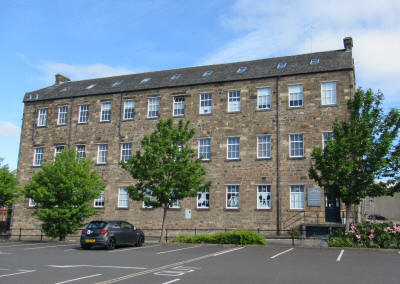 |
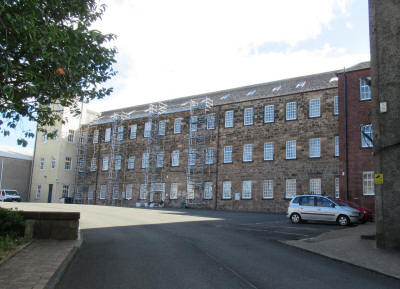 |
|
Grade A listed Mile End Mill (below)
was also designed by W J Morley of Bradford in
1899-1900. Like the Domestic Finishing Mill it was
steam-powered and has an elegant 200ft high
octagonal brick chimney stack, the only one on the
site to have survived.
The chimney is used as a mobile phone antenna.
The mill’s role was mainly to perform a twisting
process which combined two or more yarns to make
them suitable for sewing. This building has also
been restored and now houses offices, a gym, and a
museum. Of course the museum was not open when we
visited!
|
|
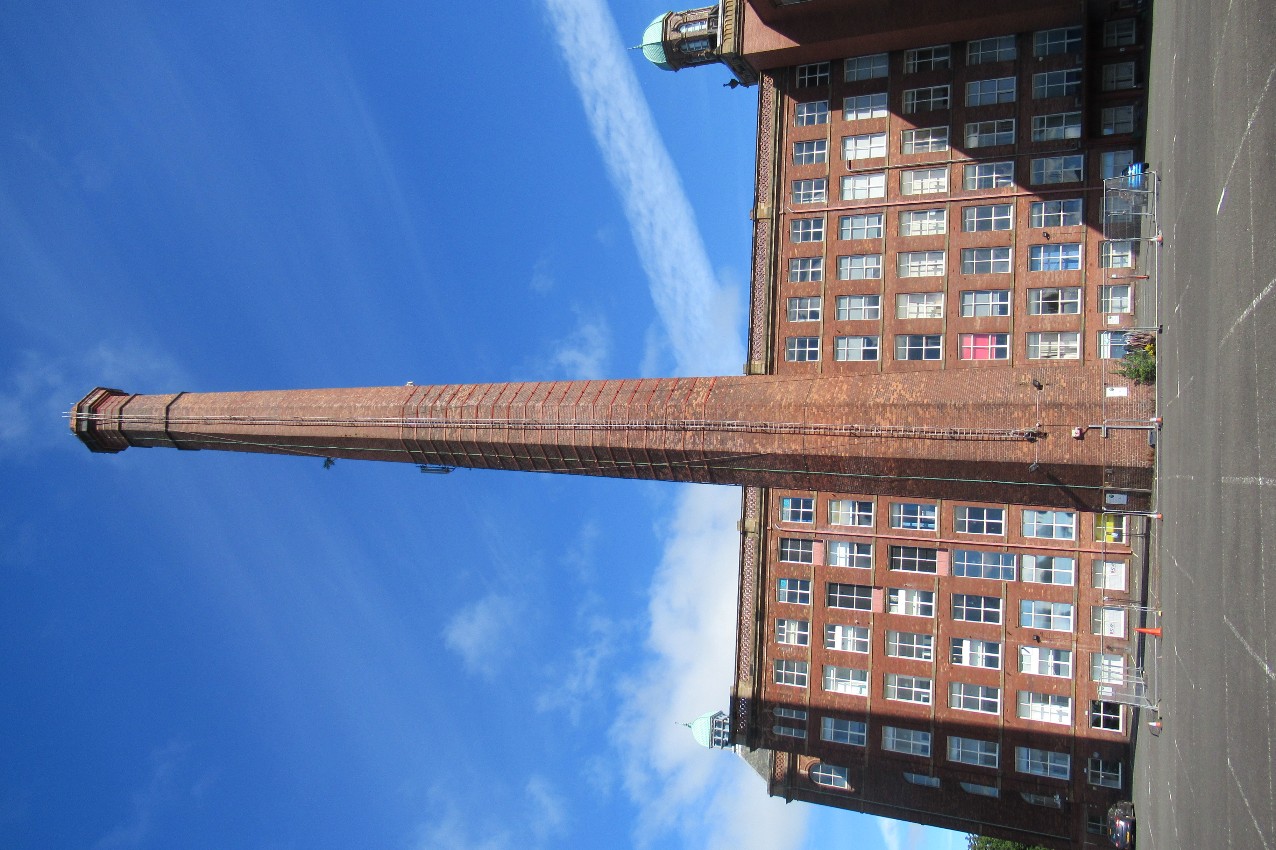 |
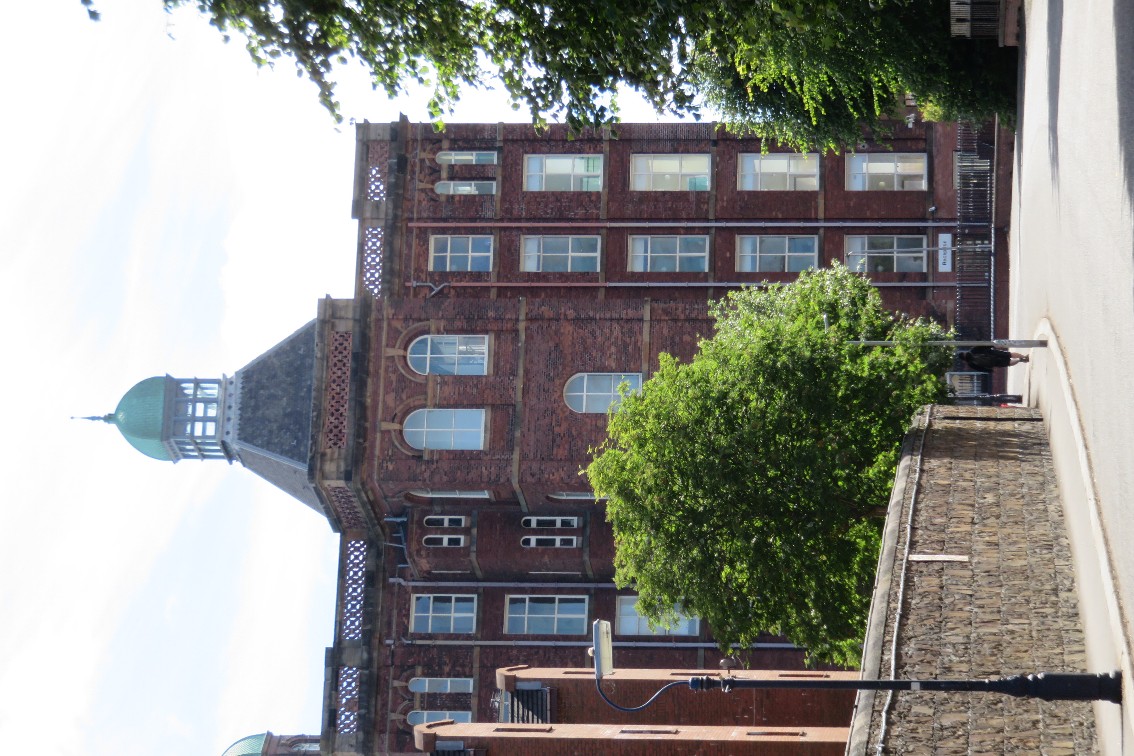 |
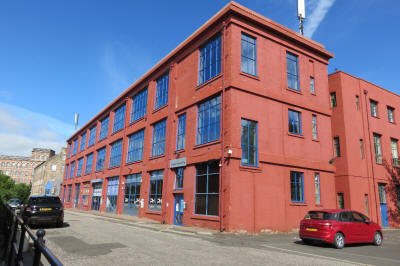 |
One of the newer mills on the site, the Gassing
Mill of 1923, housed the gassing and mercerising
processes. Gassing involved giving the thread a
smooth surface by singeing it in a gas jet. It was
then mercerised by being passed through a solution
of caustic soda before being stretched in hot water
and rinsed. This gave a silk-like thread, perfect
for embroidery and dressmaking.
|
|
Finally, in case you think I had forgotten that this
newsletter principally reports on watermills and
windmills, a 17th century former cornmill which
presumably was on the site first, used the head of
water from Hammills Falls. This was Saucel Mill
which was rebuilt in 1968 as the Watermill Hotel.
We were amused by the unusual method of displaying
the millstones at the entrance and then intrigued by
a piece of wood that was displayed diagonally in an
alcove. I think I can guess what it was for, but
what do you think?
|
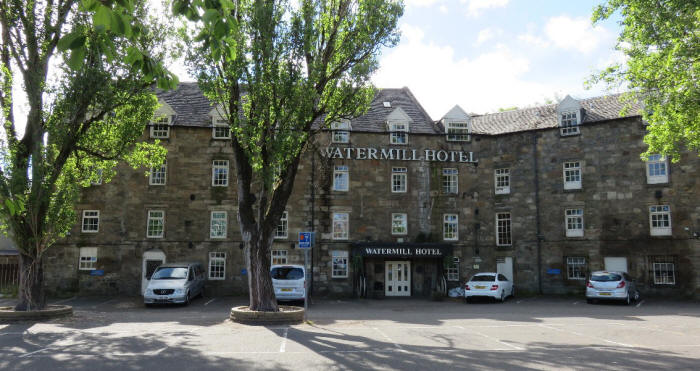 |
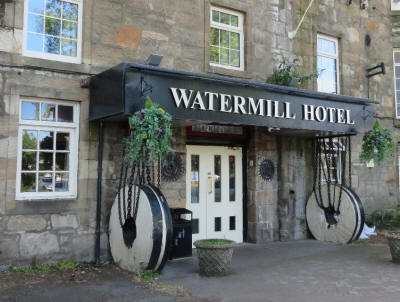 |
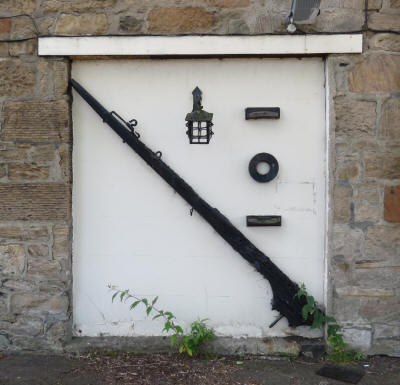 |
|
Information from
Paisleythreadmill.co.uk, Paisley.org.uk,
and
Paisleypeoplesarchive.org |
|
|
